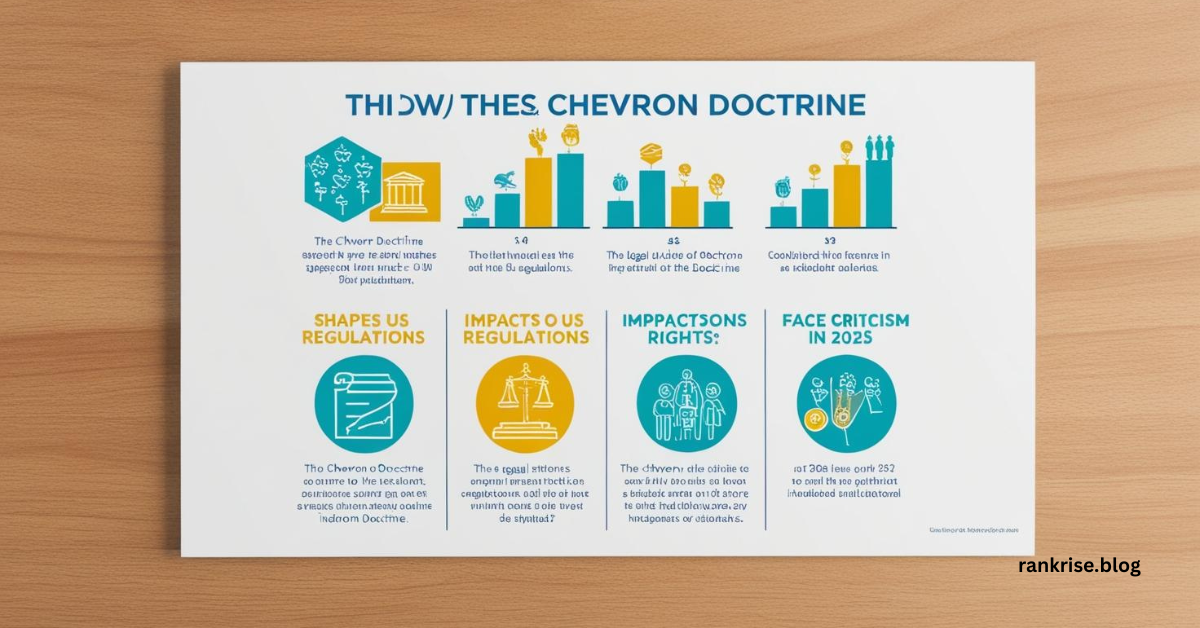The Chevron Doctrine for dummies isn’t just a term tossed around in law school—it’s a real legal rule that shapes how government rules are made and enforced. Born from a 1984 Supreme Court case, this doctrine gives federal agencies the power to interpret vague or unclear laws passed by Congress. While that sounds boring, it’s not. It affects everything from clean air to your medications. If you’re trying to make sense of the Chevron Doctrine for dummies, this guide will break it all down in plain English, without the legal jargon.
What Is the Chevron Doctrine and Why Should You Care?
At its core, the Chevron Doctrine for dummies means that when a law is confusing or unclear, federal judges will usually let government agencies decide what it means—as long as their interpretation is reasonable. This gives big agencies like the Environmental Protection Agency (EPA) or the Food and Drug Administration (FDA) major authority. So when you hear about rules on pollution, medicine, or internet policy, they’re likely shaped by this doctrine. It’s a huge deal, and most people don’t even know it exists.
A Simple Example That Explains It All
Let’s say Congress passes a law about “clean air” but doesn’t explain exactly what that means. The EPA steps in and decides what counts as “clean.” Someone sues and says, “That’s not what Congress meant!” Under the Chevron Doctrine for dummies, the court would ask two things: Is the law unclear? And if so, is the EPA’s interpretation reasonable? If both answers are “yes,” the court lets the EPA’s decision stand. It’s basically the government’s way of filling in the blanks.
Where Did the Chevron Doctrine Come From?
This whole idea started with a case called Chevron U.S.A., Inc. v. Natural Resources Defense Council back in 1984. The Supreme Court decided that agencies like the EPA should be trusted to handle laws that are complicated or unclear. That ruling changed everything. It was meant to stop judges from micromanaging technical decisions. Now, when people talk about the Chevron Doctrine for dummies, they’re talking about one of the most important legal tools used in modern American lawmaking.
The Doctrine Under Fire: Recent Supreme Court Drama
Lately, the Chevron Doctrine for dummies is back in the spotlight. Why? Because the current Supreme Court is rethinking it. Some justices believe it gives too much power to federal agencies and not enough to judges or lawmakers. There are big debates happening over whether this doctrine should be limited or even thrown out. If that happens, it could shake up how laws are enforced nationwide. Agencies would lose power, and courts would gain more control over how laws are interpreted.
What Happens If the Chevron Doctrine Disappears?
If the Supreme Court decides to weaken or kill the Chevron Doctrine for dummies, the balance of power shifts big time. Judges—not agencies—would decide what unclear laws mean. That could lead to less consistency, more lawsuits, and slower decision-making by the government. It might also make it harder for agencies to act quickly in emergencies, like during a health crisis or natural disaster. Some say that’s good for democracy; others say it’s a recipe for chaos. Either way, it’s a big change.
How It Affects Your Daily Life Without You Realizing
The Chevron Doctrine for dummies touches your life in surprising ways. That clean water rule? It’s shaped by agency interpretation. The warning labels on your medication? Same thing. Without this doctrine, agencies might hesitate to make bold moves out of fear that a judge will strike them down. That could lead to weaker safety rules, less environmental protection, and more corporate freedom. Whether that’s good or bad depends on your view, but the impact is very real—even if it’s hidden.
Why Politicians and Big Companies Care So Much
You’re not the only one Googling Chevron Doctrine for dummies—politicians, corporations, and lobbyists care deeply about it. Agencies with more power can create stronger rules, which businesses often resist. If the doctrine is removed, companies may have more freedom to operate without interference. On the flip side, that also means less protection for the public in many areas. This doctrine is like a silent referee, shaping the game of government regulation. And now, that referee might get benched.
Final Thoughts: Why You Should Pay Attention
The Chevron Doctrine for dummies might sound boring, but it’s one of the most powerful tools in U.S. government. It decides who gets the final say when a law is fuzzy: judges or experts. With legal battles heating up in 2025, this doctrine is on shaky ground. Whether you’re a student, a voter, or just a curious thinker, understanding this topic gives you insight into how the rules that affect your life are really made—and who gets to make them.
Frequently Asked Questions (FAQs)
Q: What is the Chevron Doctrine in simple words?
A: It’s a rule that says judges should trust government agencies to interpret unclear laws, as long as their interpretation is reasonable.
Q: Why is the Chevron Doctrine controversial?
A: Some say it gives too much power to unelected agencies, while others believe it helps experts handle complex laws better than judges.
Q: Is the Chevron Doctrine still in use in 2025?
A: Yes, but it’s under major legal review. The Supreme Court is considering whether to limit or end its use.
Q: How does it affect me?
A: It impacts how laws are enforced, including rules about health, the environment, safety, and business practices.
Q: Why do people search “Chevron Doctrine for dummies”?
A: Because it’s a complex topic, and people want a plain-English explanation of how it works and why it matters.



